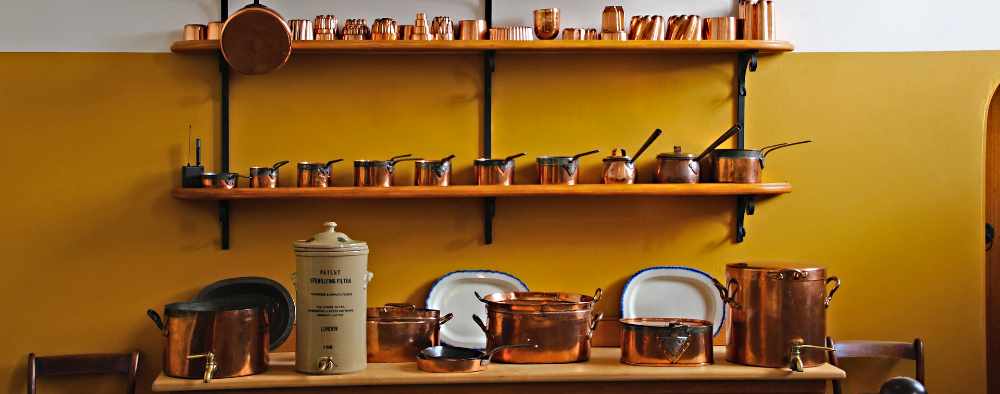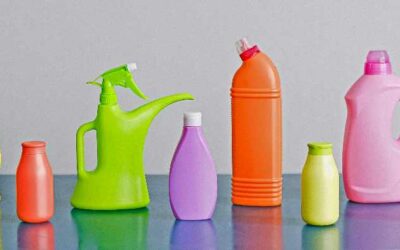by Susan Stamper •
Content Marketing Manager, ChiroHealthUSA •
Y’all ever had one of those moments where you slide a fried egg right off the pan like you’re the next contestant on Top Chef? There’s just something magical about it. Kinda like hittin’ all green lights when you’re running late or finding money in last year’s coat pocket. But here’s the kicker — that fancy, no-stick pan you’re singing praises to might be serving up more than just breakfast. 🍳😬
Now, before you go chunking every pan in your kitchen out the window like it’s a cast reunion of Steel Magnolias, let’s have ourselves a little heart-to-heart about cookware — the good, the bad, and the “oh, honey, what were we thinkin’?!”
The Truth Behind That Nonstick Magic 🧪
Let’s cut right to the meat — that silky smooth surface on your nonstick pan is usually thanks to some sneaky chemicals called PFAs (per- and polyfluoroalkyl substances). Some of the most common ones are PTFE (hello, Teflon), PFOA, and GenX. They’re designed to make sure nothing sticks, which is great for pancakes but not so great for your health.
These PFAs have been dubbed “forever chemicals” because, bless their hearts, they just don’t go away. They can linger in your body and the environment for years, like that one friend who never got the hint to leave the cookout. Studies suggest long-term exposure to PFAs may be linked to cancer, liver damage, thyroid disease, and even fertility issues (Medical News Today; ScienceDirect).
And here’s a fun fact that’ll make you catch your breath like jumping into cold water — overheating these pans (usually over 500°F) can release toxic fumes. Ever heard of “Teflon flu?” Yep, it’s a real thing. It’s like your pans are passive-aggressively punishing you for turning up the heat too high.
Heavy Metals Aren’t Just for Rock Bands 🎸
It’s not just the nonstick ones causing a ruckus. Other types of cookware, like aluminum, copper, and even stainless steel, can leach metals into your food if they’re scratched up or worn down — and we’re not talking about a sprinkle of flavor either. We’re talking nickel, chromium, and cadmium — the kind of stuff that’s better suited for a toolbox than a taco night (ResearchGate).
Chronic exposure to heavy metals may lead to all sorts of mess — think kidney issues, neurological problems, and immune dysfunction (PubMed; PMC). Ain’t nobody got time for that when you’re just trying to sauté some onions.
So What’s a Southern Cook Supposed to Use?
Alright y’all, take a deep breath — you don’t have to live off takeout to stay safe. Let’s talk alternatives that’ll keep your health in check and your food tasting like Mama used to make:
1. Cast Iron (a true Southern legend) 🍳❤️
If Grandmama had a kitchen MVP, it was probably her cast-iron skillet. Properly seasoned cast iron is naturally nonstick, toxin-free, and can basically become a family heirloom if you take care of it. Bonus? It even adds a little iron to your diet, which can be a good thing, especially if you’re a bit anemic. Plus, these are easy thrift finds (ifykyk). 🤩
Just remember: don’t soak it, don’t dishwash it, and for the love of all things holy, don’t cook acidic stuff like tomatoes in it for too long — unless you like tangy, metallic spaghetti sauce.
2. Stainless Steel (fancy but friendly)
Durable, versatile, and less likely to leach metals if you go with high-quality options (like 18/10 stainless). It heats evenly and browns food beautifully. Perfect for Sunday gravy or that fried cabbage recipe you only bust out on special occasions.
3. Ceramic-Coated (not your grandma’s pottery)
These are slick like nonstick but without most of the scary chemicals. Just don’t confuse ceramic-coated with pure ceramic — the coating can wear off, and once it does, you’re back in leach-ville. Handle with care, sug’.
4. Glass (clear and kind-hearted)
Great for baking and storing food. Doesn’t leach, doesn’t react, and lets you see all those lovely layers of your casserole. Downside? It’s fragile, like your nerves after hosting Thanksgiving.
5. Pure Ceramic (if you’re feelin’ fancy)
It’s a bit bougie, but pure ceramic cookware is naturally nonstick, toxin-free, and beautiful to boot. It’s usually oven-safe, but it might cost a pretty penny. Worth it if you’re ready to invest in your kitchen like it’s your retirement plan.
Cookware Tips to Keep You Sizzlin’ Safely 🔥
Here are a few golden rules — from one porch-sittin’, sweet tea-sippin’ friend to another:
- Don’t overheat nonstick pans. Keep it under 400°F.
- Ditch scratched or damaged cookware. If it looks like it’s been in a bar fight, it’s time to part ways.
- Use wooden or silicone utensils. Metal on metal is a big NO.
- Store properly. Nesting pans can cause damage. Try hanging or padding between them.
- Season cast iron regularly. Think of it like skincare, but for your skillet.
Final Thoughts: Don’t Go Throwing Everything Out, Y’all 🥘
Listen— No need to be frightened of your kitchen! I used to love nonstick pans, just like many people do, but now I adore my Lodge cast-iron pan. We want to empower you with information to make informed choices, as Mama always says. Swapping out a pan or two can go a long way in keeping you and your family healthy for all those cherished Sunday Suppers, Taco Tuesdays, and Fish Fry Fridays.
So next time you’re browning up some cornbread or flipping flapjacks, take a moment to tip your (imaginary) chef’s hat to better, safer cookware. Because you deserve to feel like a top chef, without wondering if your breakfast came with a side of chemicals. 👩🍳✨
Sources:
American Chemical Society. (2025). Does nonstick cookware work—and should you use it? Chemical & Engineering News. https://cen.acs.org/environment/persistent-pollutants/does-nonstick-cookware-work-should/103/web/2025/04
Sharma, H., & Singh, R. (2024). Cookware as a source of toxic metals: An overview. ResearchGate. https://www.researchgate.net/publication/388973172_Cookware_as_source_of_toxic_metals_An_overview_Heavy_metal_leaching_from_cookware
Medical News Today. (2023). Are nonstick pans toxic? https://www.medicalnewstoday.com/articles/are-nonstick-pans-toxic
ScienceDirect. (2024). Persistent organic pollutants from cookware and health risks. https://www.sciencedirect.com/science/article/pii/S0048969724027232
National Library of Medicine. (2017). Exposure to heavy metals through cookware. https://pubmed.ncbi.nlm.nih.gov/28913736/
National Center for Biotechnology Information. (2023). Cookware and toxic chemical exposure. https://pmc.ncbi.nlm.nih.gov/articles/PMC10386729/#sec5-toxics-11-00640








